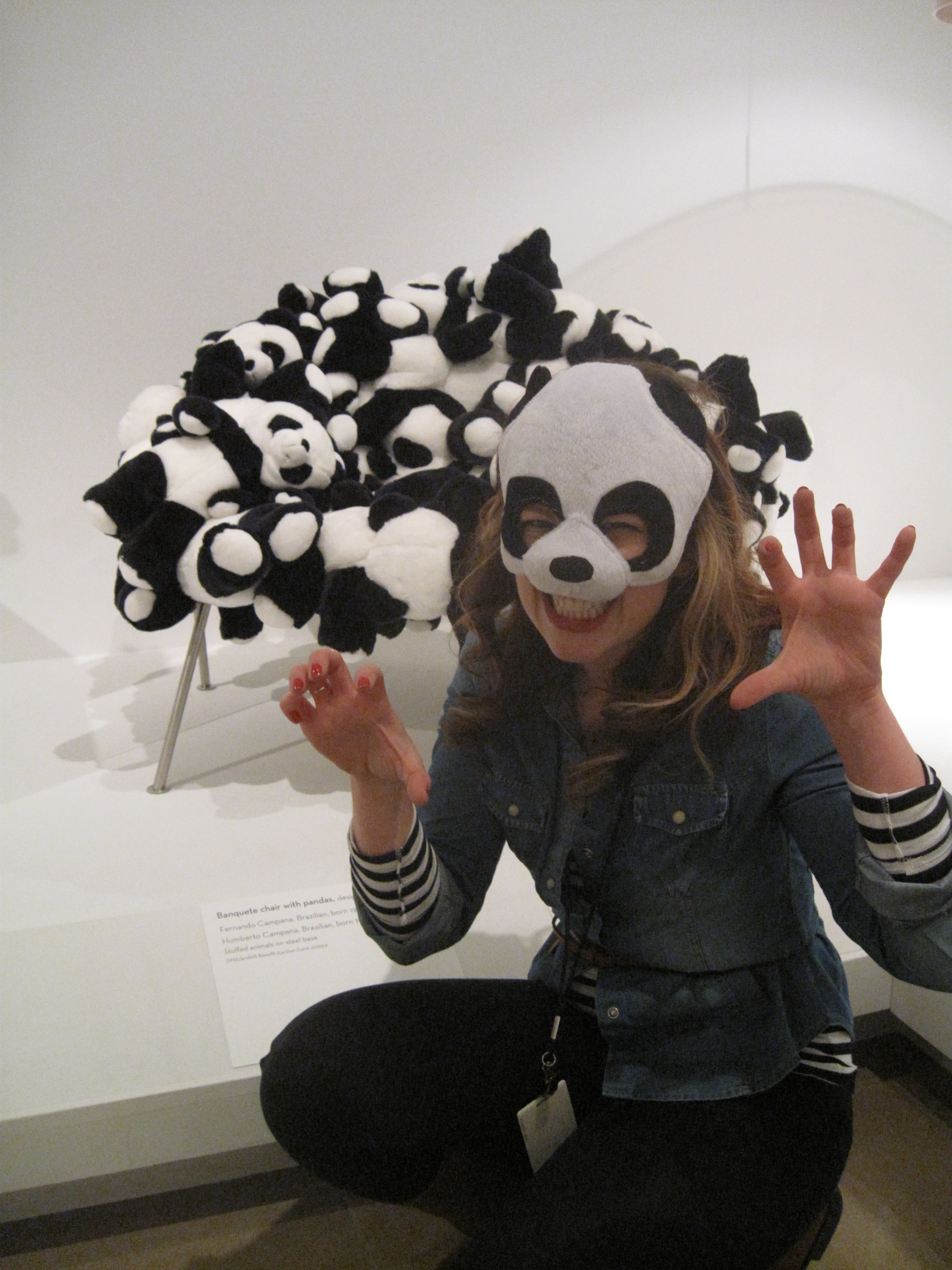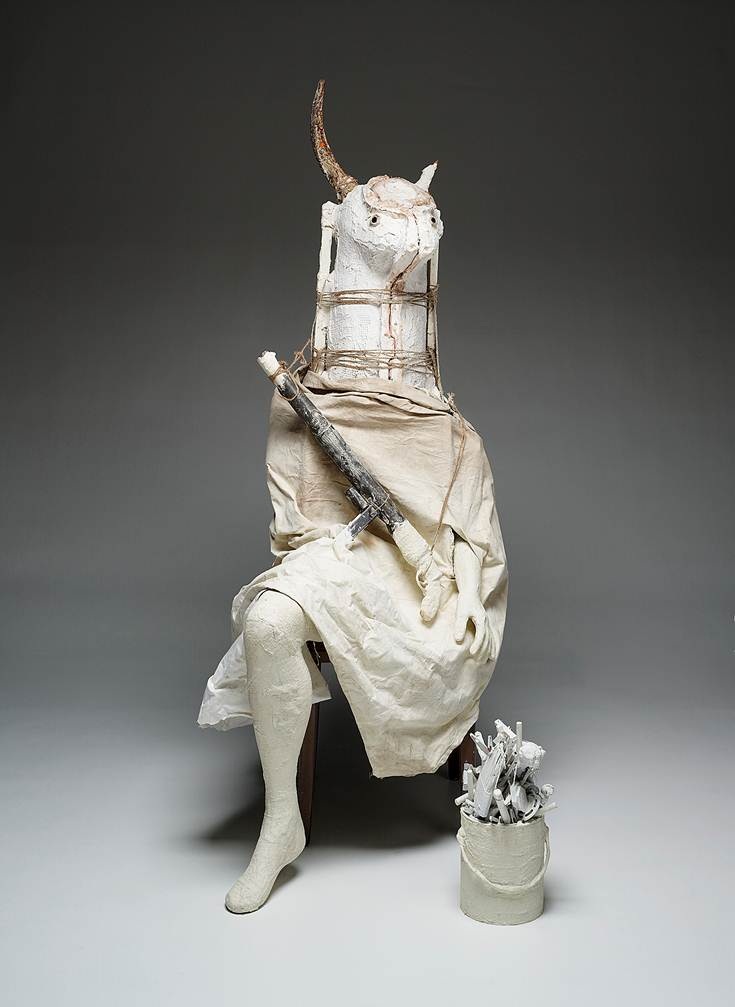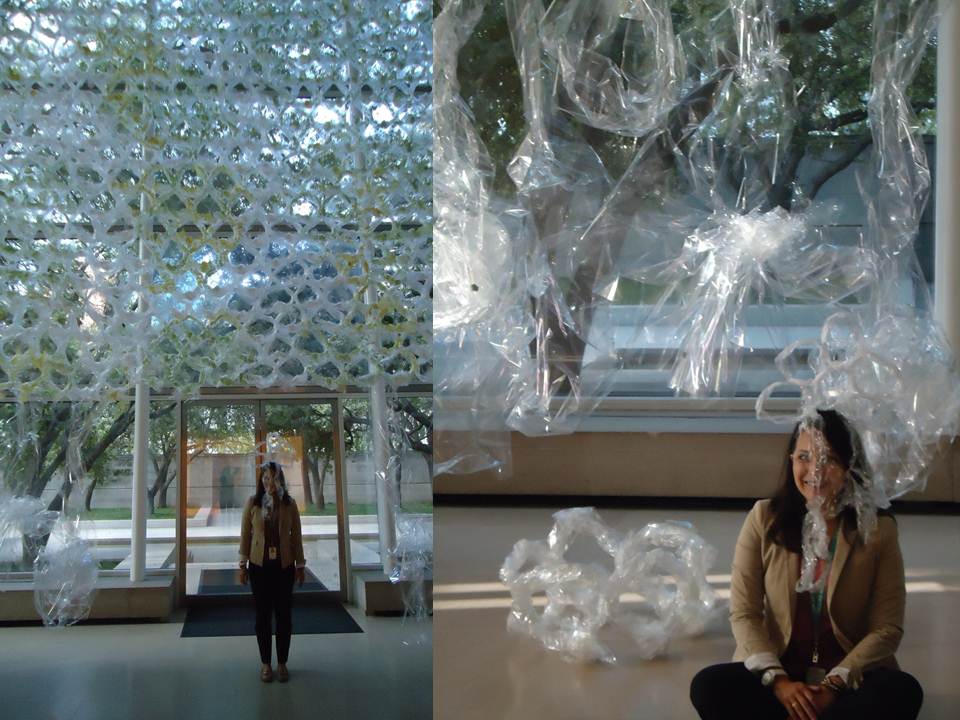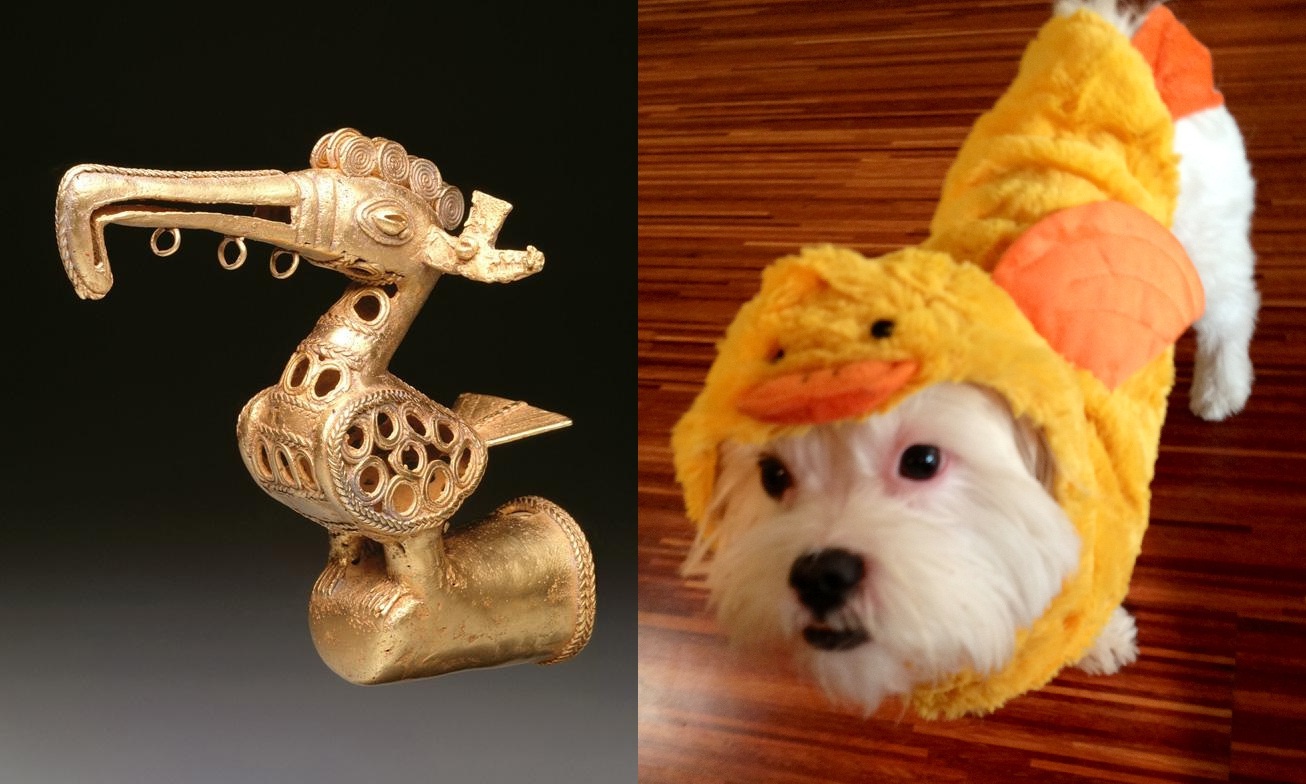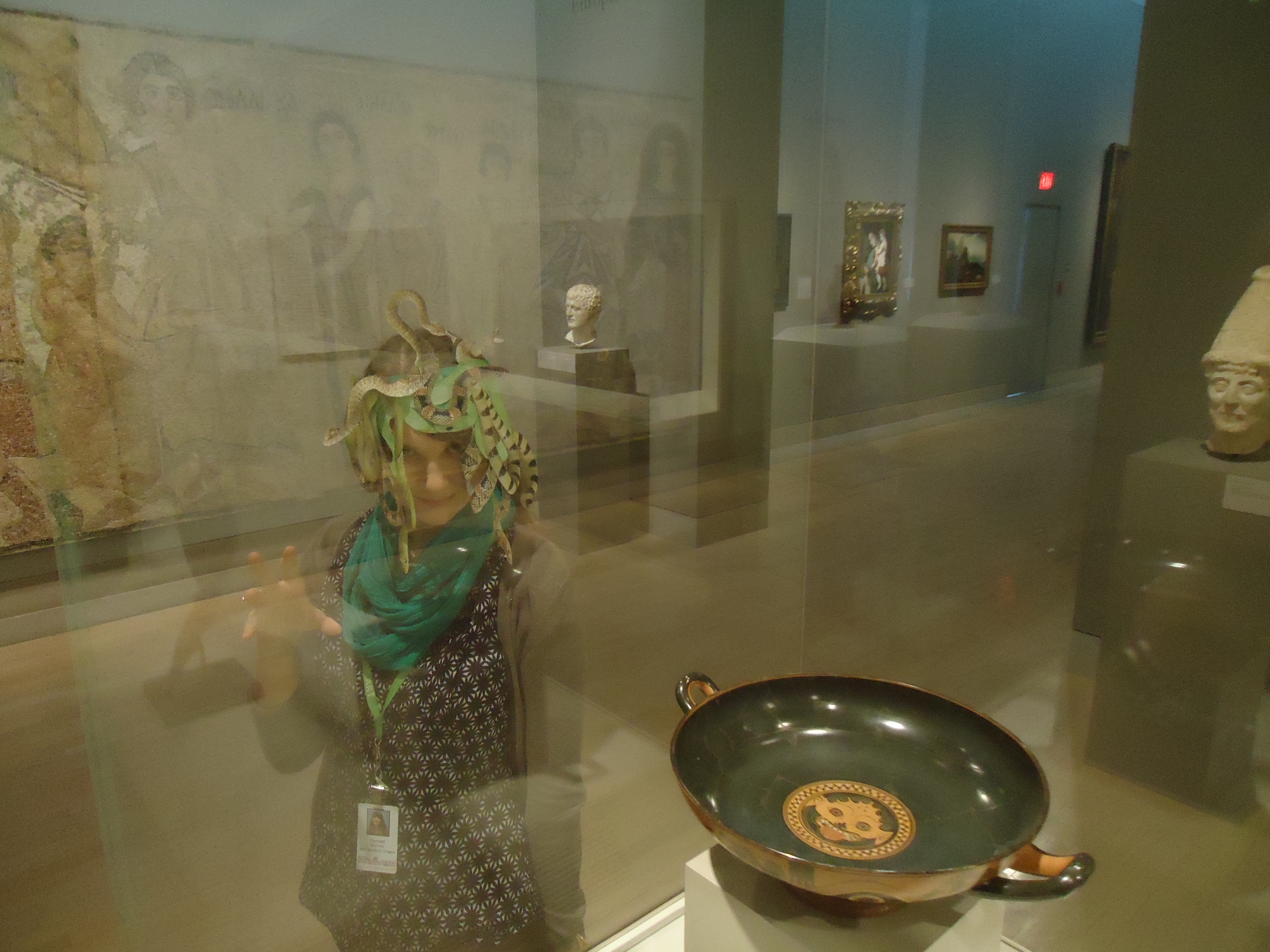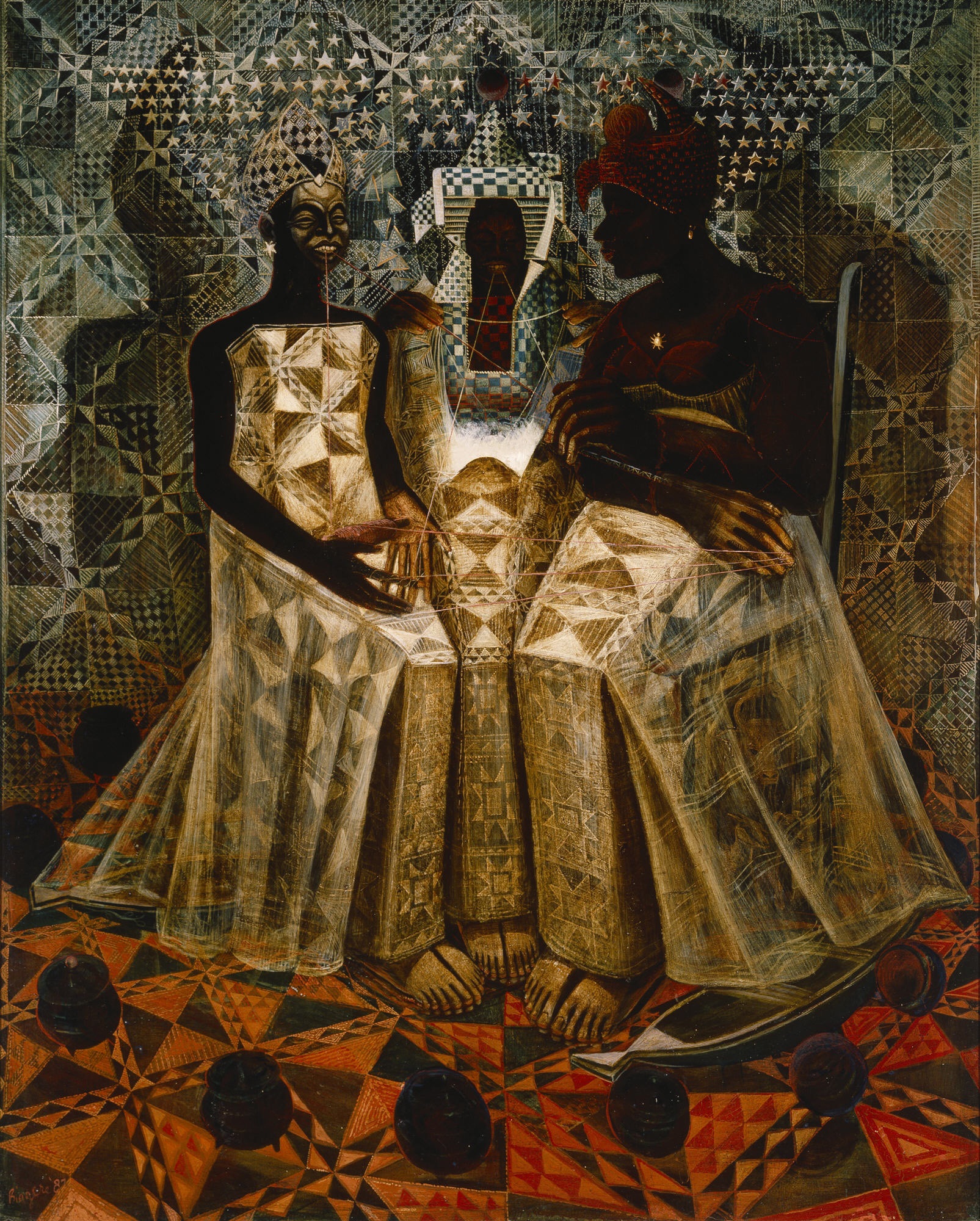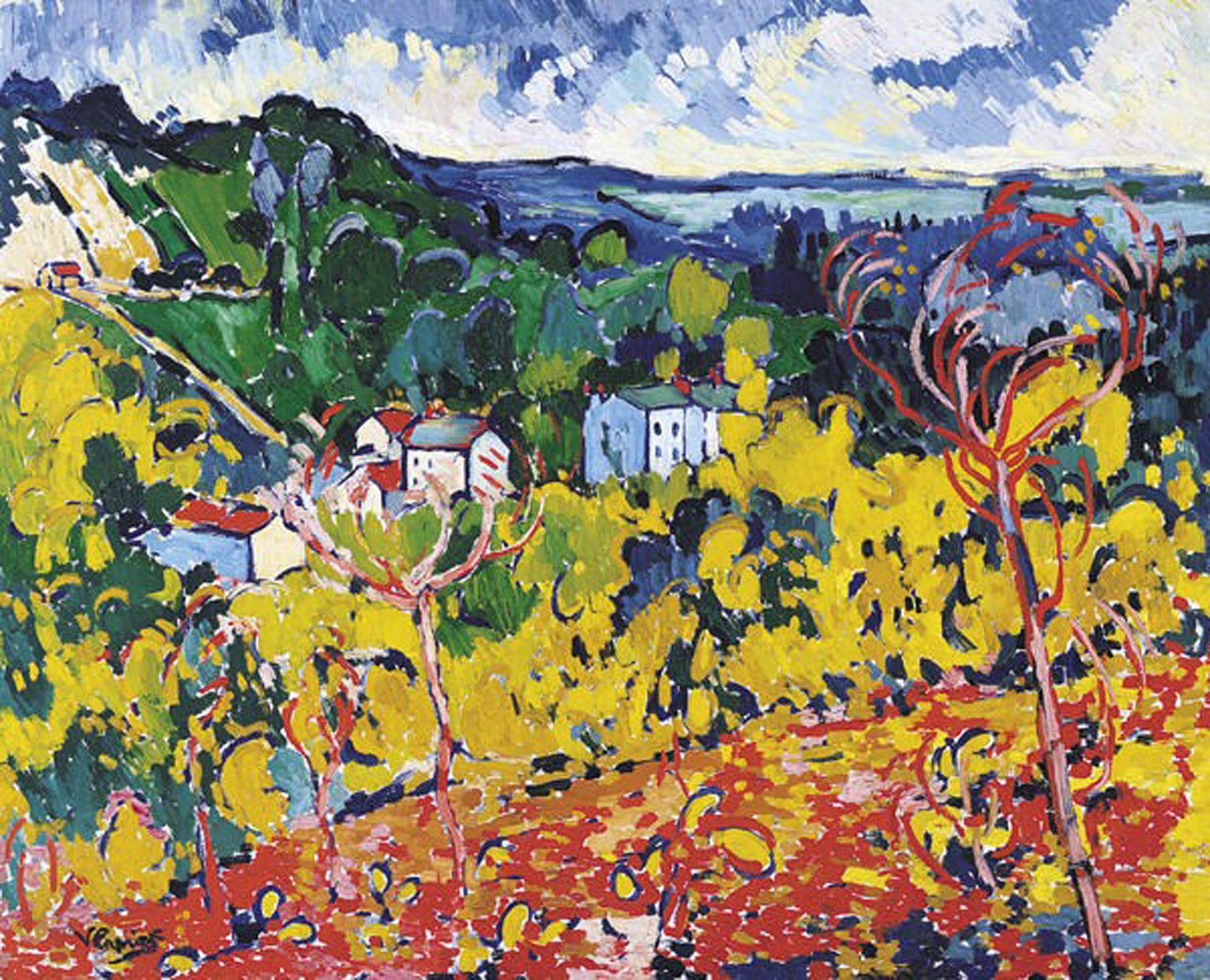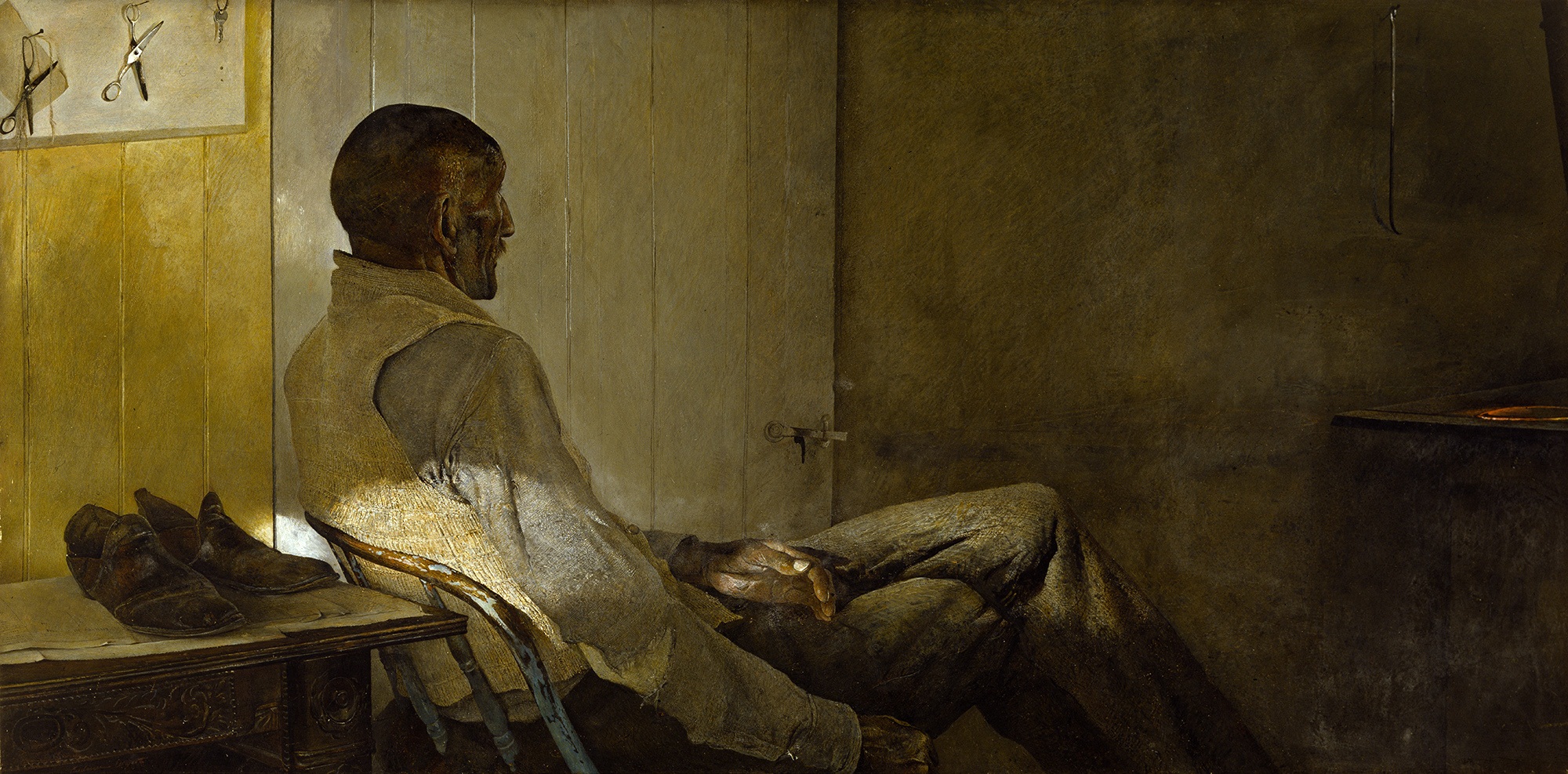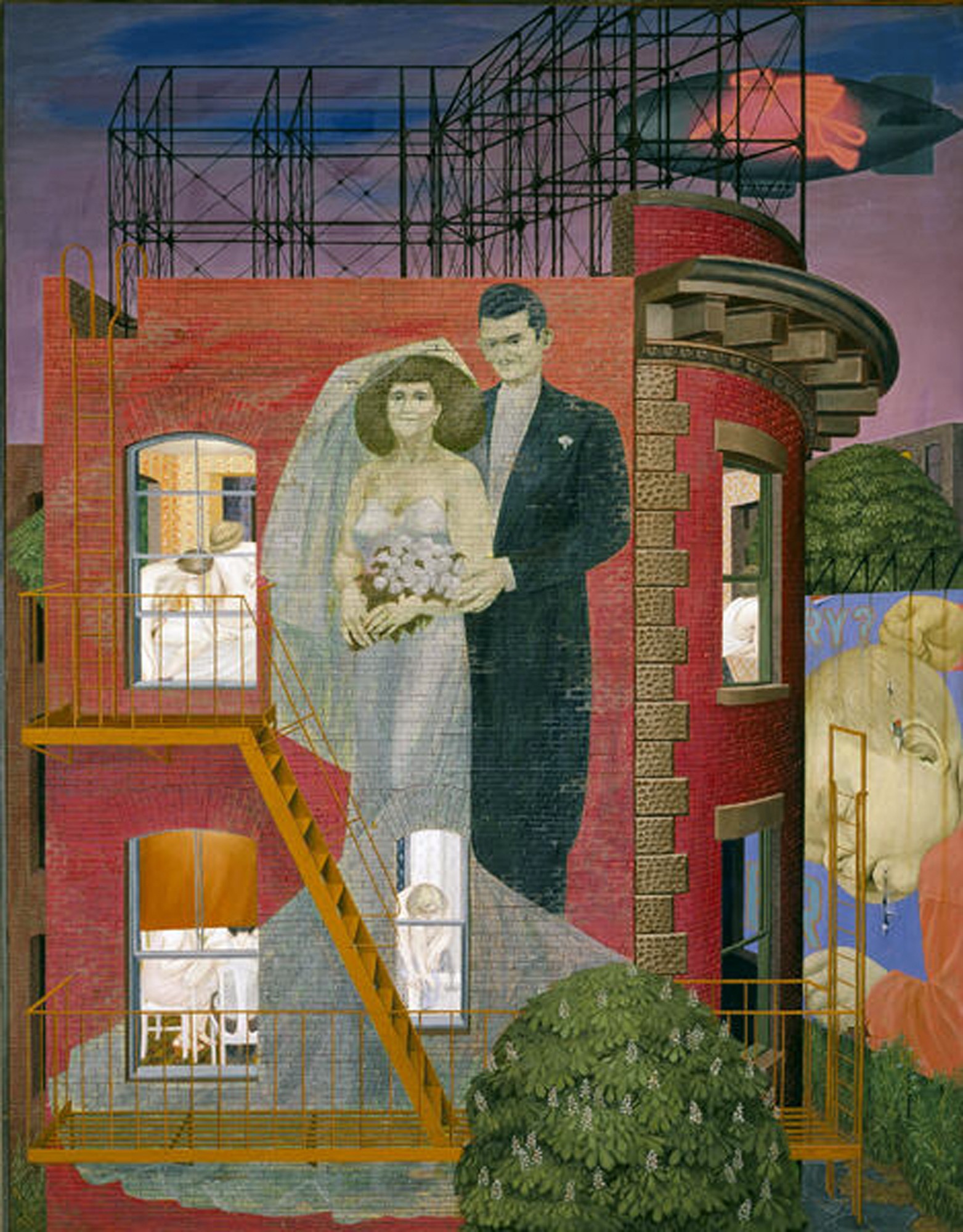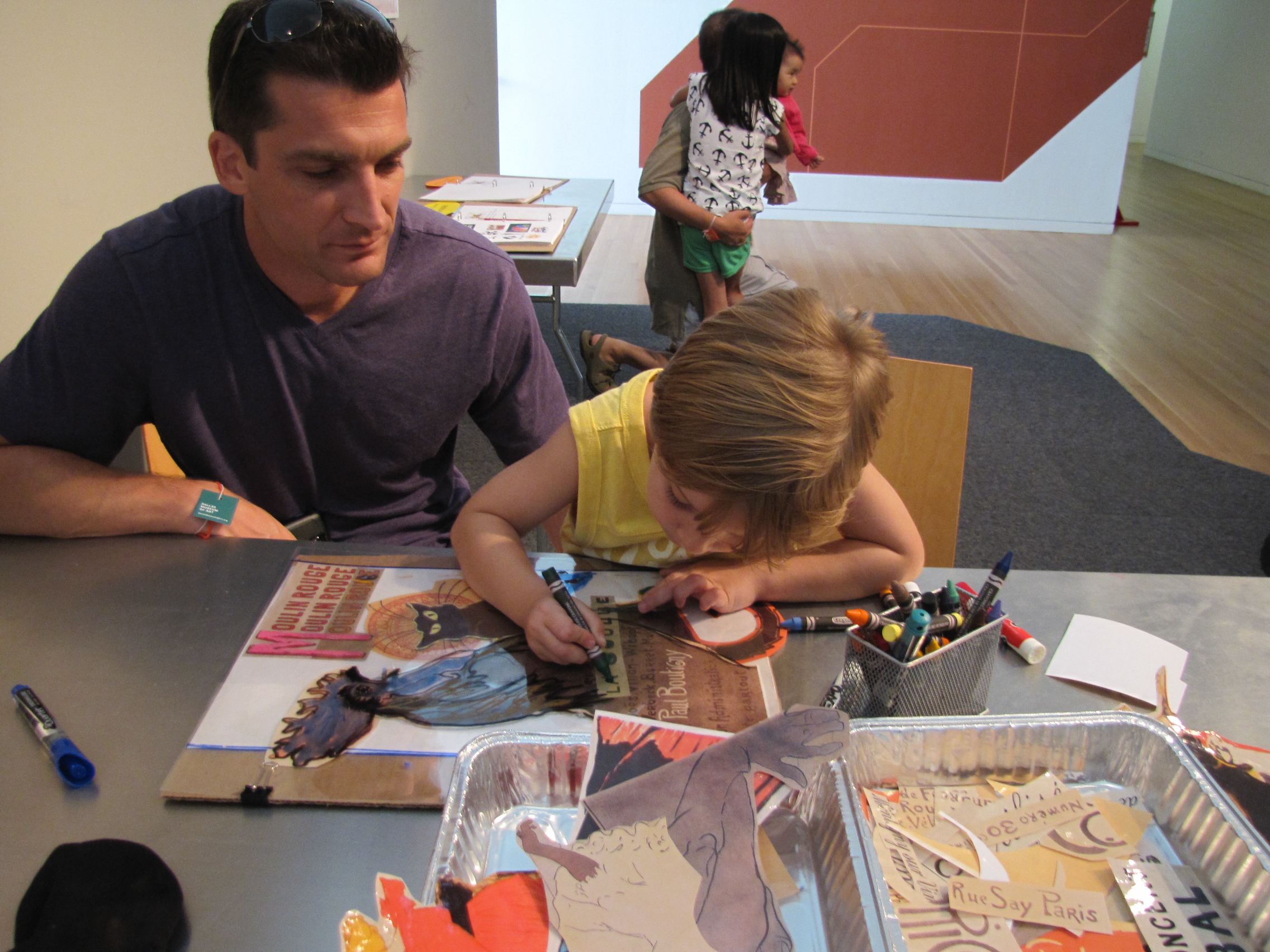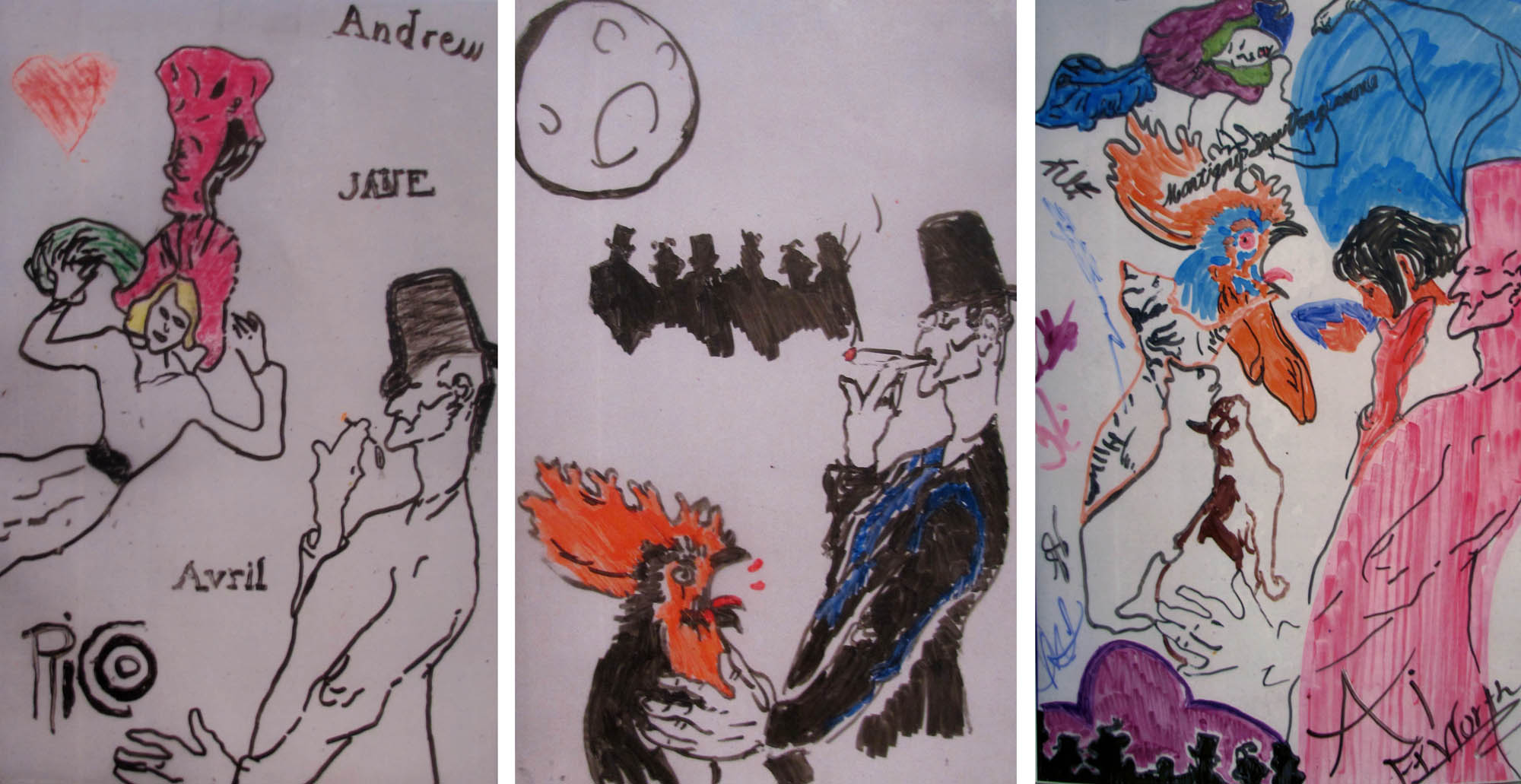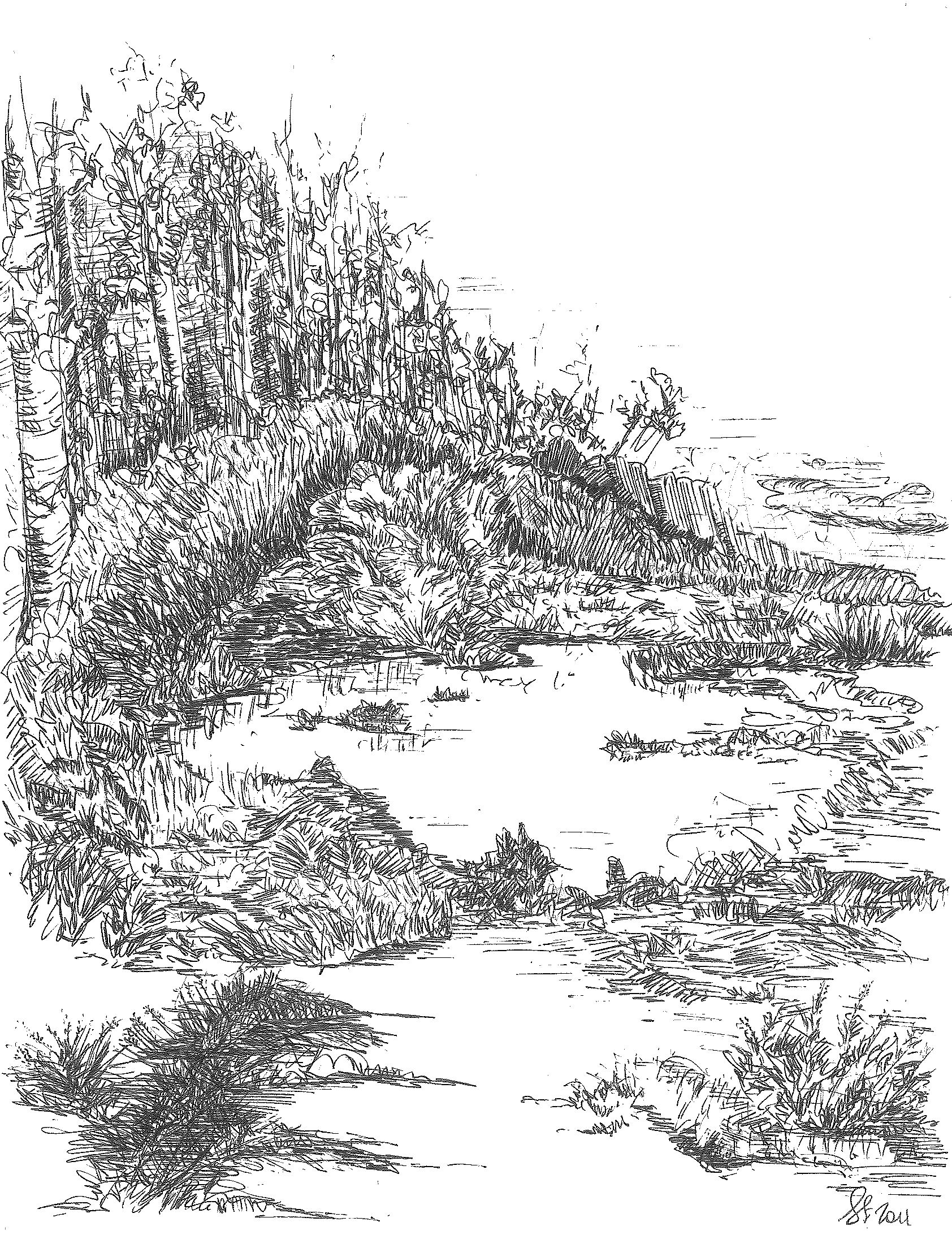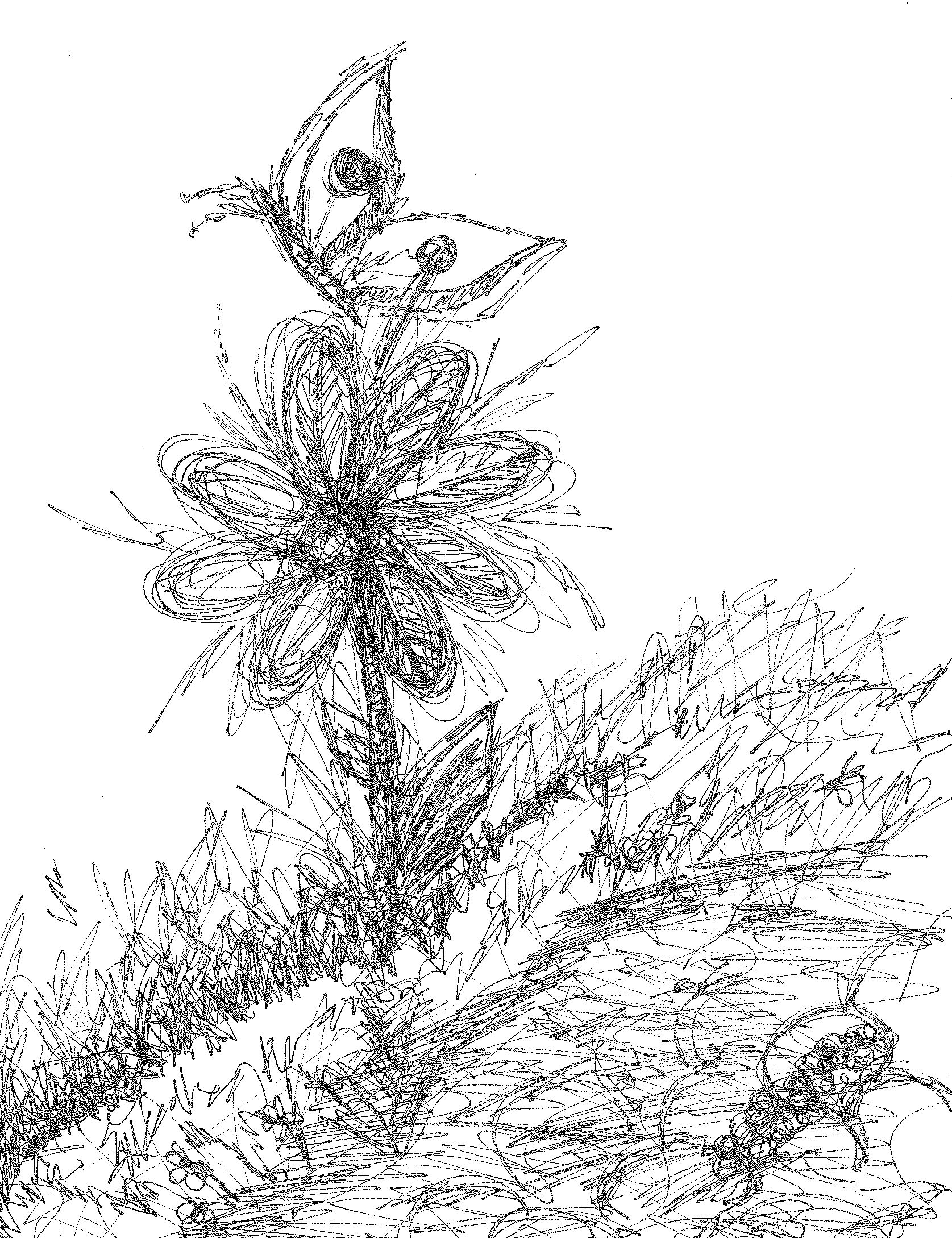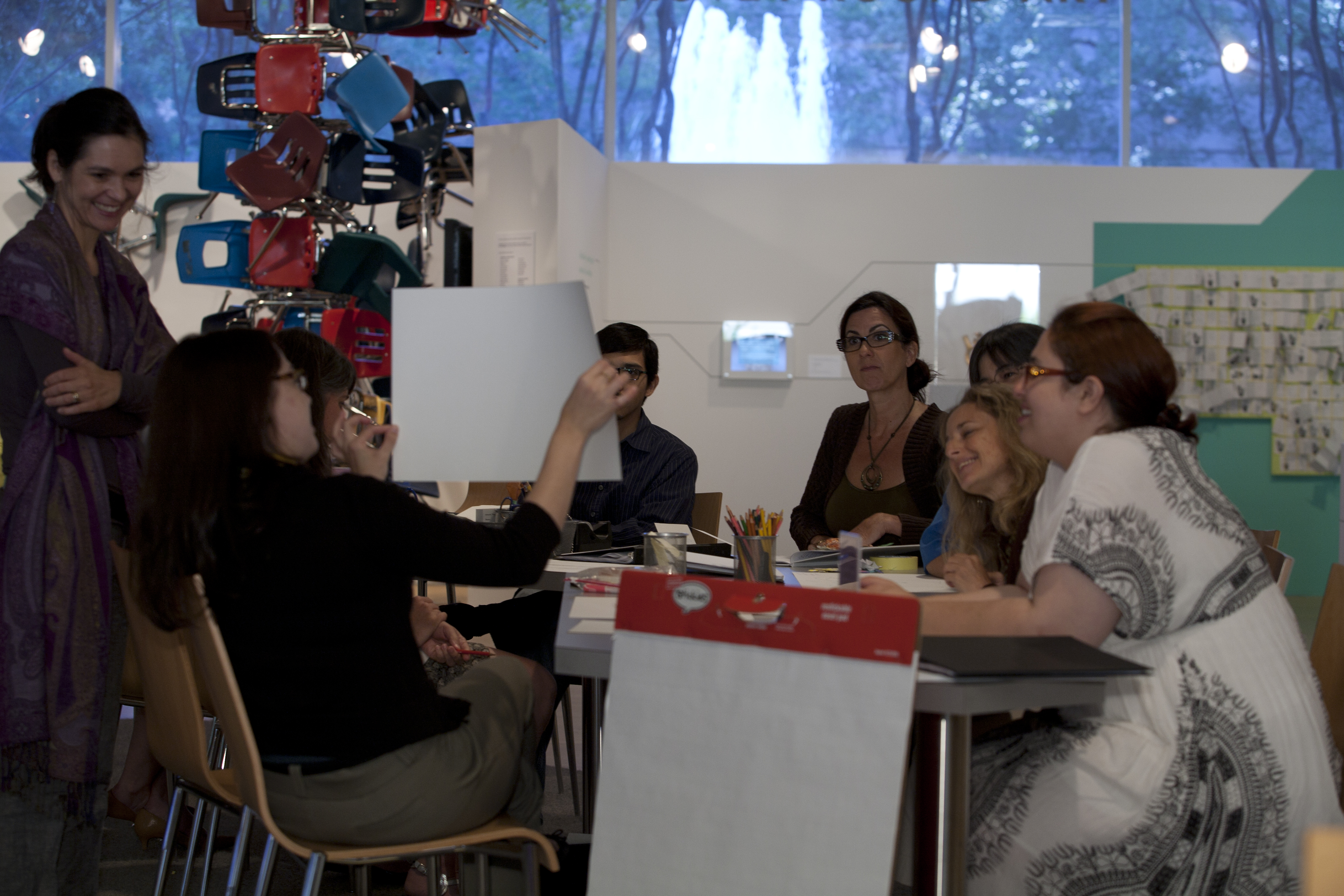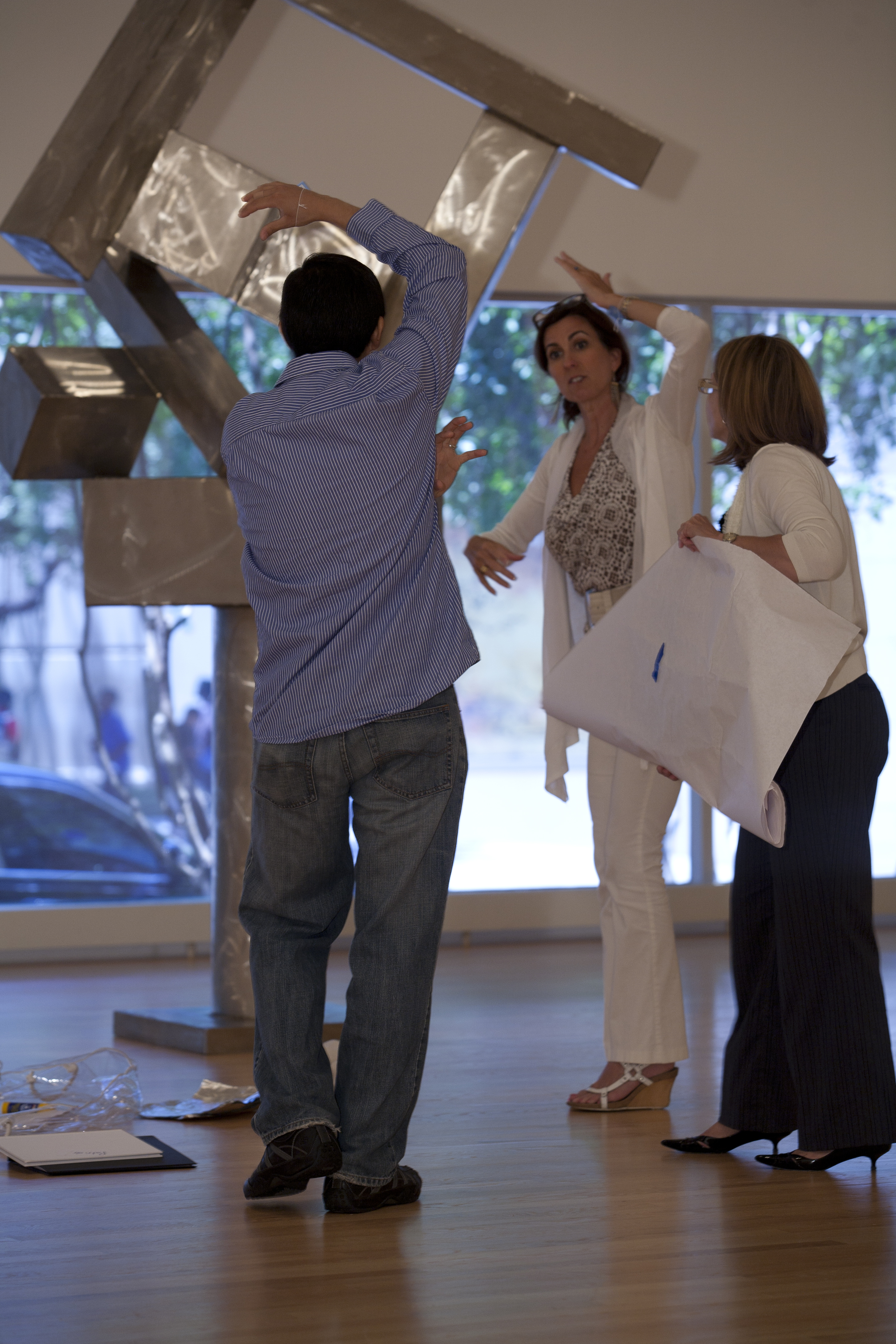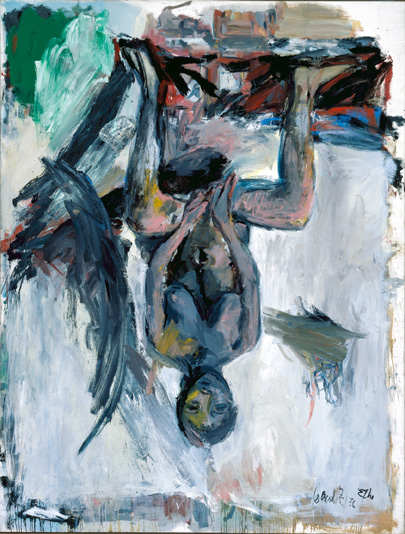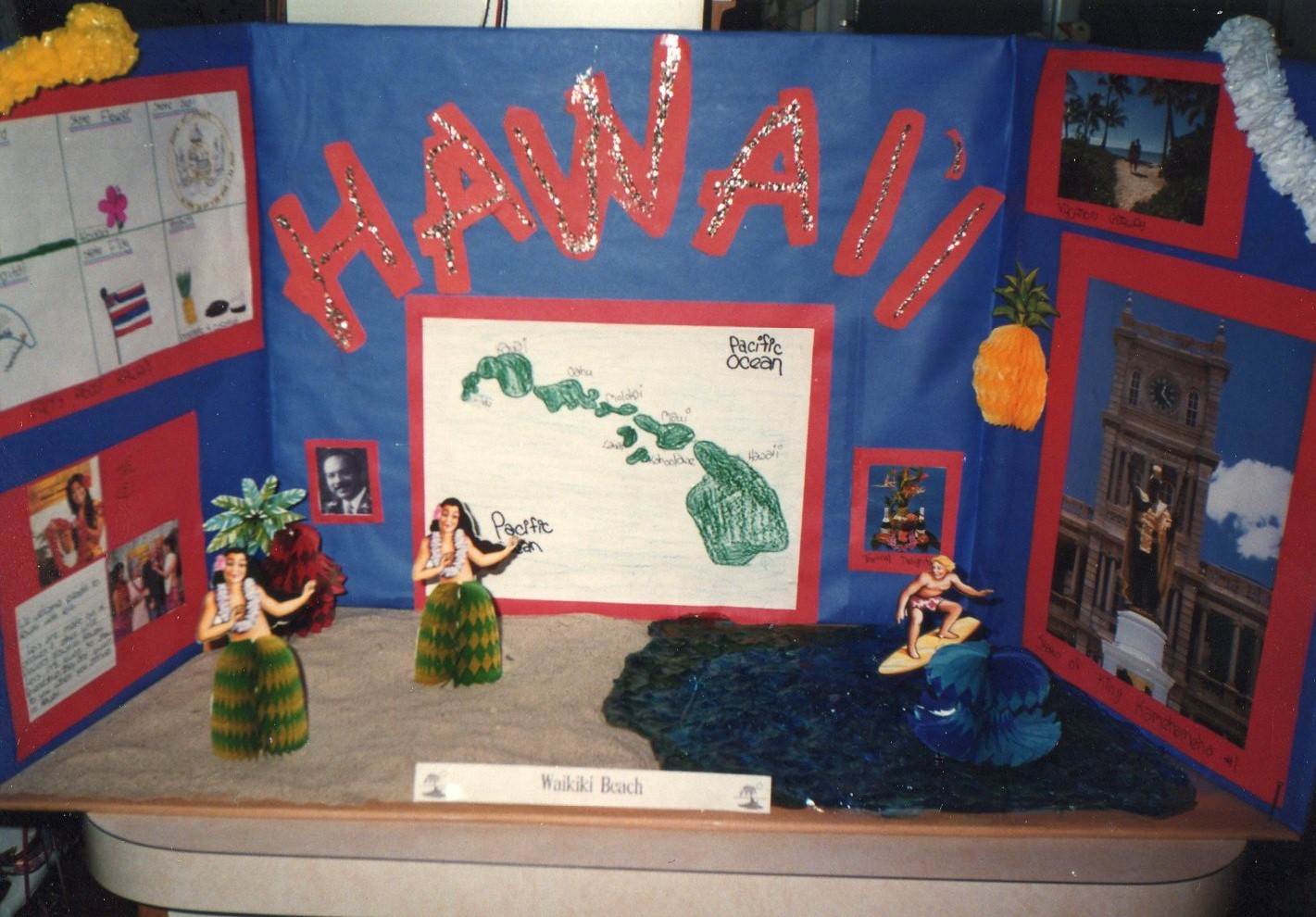Every year I struggle to think of a creative new Halloween costume to wear. Oftentimes the month somehow escapes me and I end up recycling one of my old costumes: a cat, witch, or something with a mask. However, this year I realized that inspiration is all around me in the DMA galleries. As I wandered through the Museum this month, I was flooded with images of myself as a fierce Hindu goddess with multiple arms, an affluent Asante chief covered with gold, or even a mummy wrapped in linen. Excited by all the endless possibilities, I decided to ask my fellow authors which artwork they would choose to base a Halloween costume on.
Amanda Batson
“Amanda Panda” drew her inspiration for a Halloween costume from the Banquete chair with pandas.
.
Jessica Fuentes
“I would be Marcel Dzama’s The Minotaur. The sculpture already lends itself to a costume as there appears to be a person underneath the Minotaur’s mask-like head and the white cloth. I like that the Minotaur should be a scary creature, but it looks defeated as it is portrayed here, with one horn, one arm, and one leg. I also like that the artist includes the artist tools, paint brushes in a can, I think it would be fun to walk around as this character with all of the accessories.”
.
Andrea Severin
Andrea created a headpiece inspired by our new Karla Black installation.
.
Artie
Andrea’s adorable dog Artie also wanted to dress up!
.
Hannah Burney
As for me, I decided to base my costume on the spooky gorgon head featured on the inside of this Black-figure kylix. In Greek mythology gorgons are treacherous female creatures that have snakes for hair and can turn anyone who looks them in the eye to stone.
Hannah Burney
Community Teaching Programs Assistant
Artworks used:
- Banquete chair with pandas, Fernando Campana and Humberto Campana, 2006, stuffed animals on steel base, Dallas Museum of Art, DMA/amfAR Benefit Auction Fund
- Bird-form finial, Zenú culture, South America, Colombia, c. A.D. 500-1500, gold, Dallas Museum of Art, The Nora and John Wise Collection, gift of Mr. and Mrs. Jake L. Hamon, the Eugene McDermott Family, Mr. and Mrs. Algur H. Meadows and the Meadows Foundation, and Mr. and Mrs. John D. Murchison
- Black-figure kylix, Greek, Attic, 6th century B.C., ceramic, Dallas Museum of Art, gift of Mr. and Mrs. Cecil H. Green
- Necessity, Karla Black, 2012, cellophane, sellotape, paint, body moisturisers and cosmetics, Courtesy Stuart Shave/Modern Art, London and Galerie Gisele Captain, Cologne
- The Minotaur, Marcel Dzama, 2008, plaster, gauze, rope, fabric, chair, bucket, and paintbrushes, Dallas Museum of Art, DMA/amfAR Benefit Auction Fund
